Strange lightning-strike rashes? Exploding trees? A lake that's a lightning magnet? These lightning facts will, well, shock you.
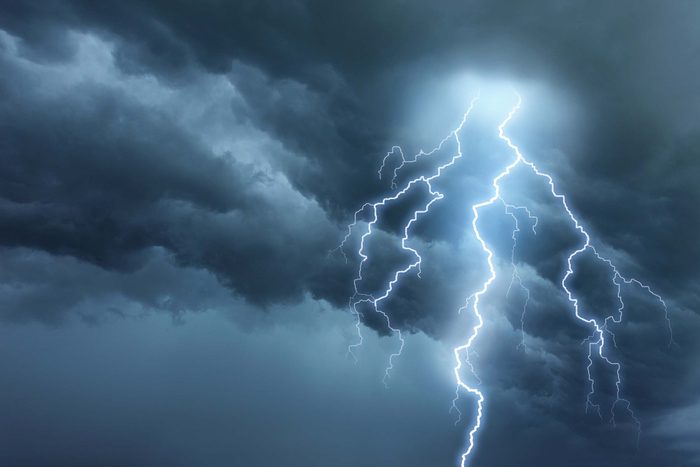
10 Weird Facts About Lightning Strikes


You can’t have thunder without lightning
That’s because thunder is the sound caused by lightning (it’s part of why dogs fear thunder). A charged, superheated lightning bolt creates a “resonating tube” as it travels. The air in the tube can be as hot as 50,000 degrees Fahrenheit that rapidly expands and then instantly cools and contracts causing vibrations and a loud initial crack followed by reverberations and echoes that you hear as the rumble of thunder.

Lightning-strike victims develop a strange discoloration
One of the lightning facts most people don’t know is that those who are struck by lightning and survive are often temporarily covered with what’s known as red Lichtenberg figures, which are red, branching, tree-like patterns created by the passage of high-voltage electrical discharges along the skin.

Lightning strikes can explode a tree
Imagine 300 million volts of electricity hitting a tree branch. The most likely result? The heat travels through the tree, vaporizing its sap and creating steam that causes the trunk to explode.

Lightning strikes hundreds of times per hour over one South American lake
Bolts of light illuminate the sky above the intersection of the Catatumbo River and Lake Maracaibo in northwestern Venezuela up to 160 nights each year. Surrounded by mountains, the 5,000 square mile lake absorbs heat during the day and at night releases warm moist air upward. It then mixes with cool air descending from the Andes to create an unusual weather pattern that helped the area set a record for the world’s most lightning bolts per square kilometer (more than one million every year). This is one of those lightning facts that hardly anyone knows.

Petrified lightning is real
When lightning strikes sand or rock, the extreme heat can fuse minerals beneath the surface into a tube called a fulgurite. Though relatively rare, these “lightning fossils” aren’t one of those weather myths—they’ve been found worldwide.

A lot of people are afraid of getting hit by lightning
The odds of being struck by lightning in your lifetime are a tiny one in 1,222,000, yet astraphobia is one of the most common phobias in America, behind acrophobia (fear of heights), arachnophobia (fear of spiders) and aerophobia (fear of flying). But beware: Some scientists say climate change could increase the chances to about 1 in 8,000 by the year 2100. So knowing these important lightning facts might help you feel a little safer during a storm.
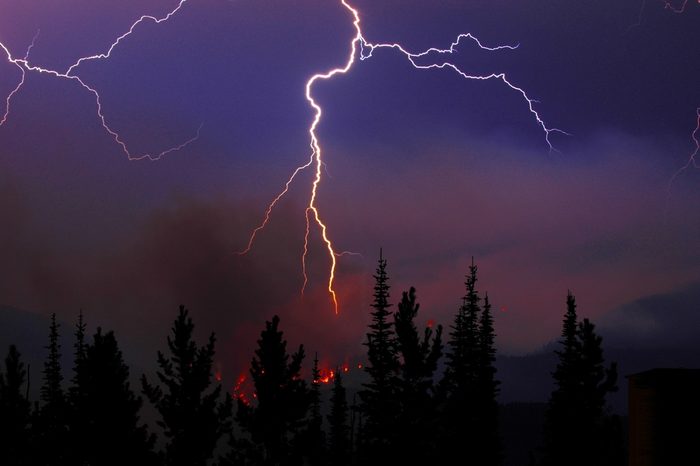
Lightning is hot
Lightning facts you already know are that it can explode a tree and leave a fractal pattern on the skin of people it strikes. Both of these effects are due to how hot lightning actually is. A flash of lightning can make the air around it five times hotter than the sun.
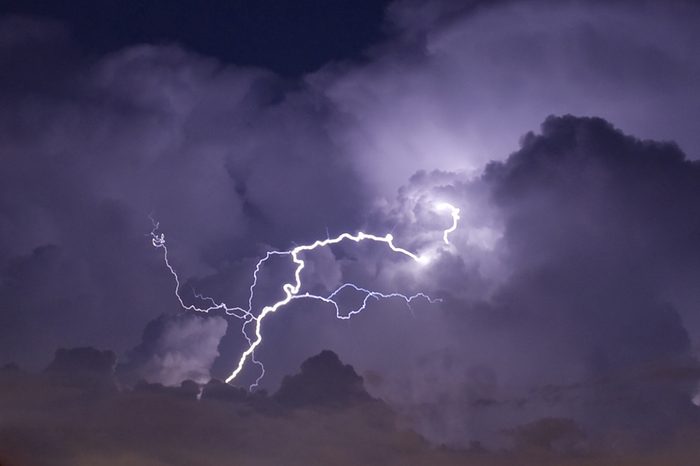
Lightning travels between clouds
Though 100 cloud-to-ground lightning bolts hit the Earth’s surface every second (there’s a fascinating fact for your next trivia night!), some common types don’t hit Earth and are called cloud flashes.
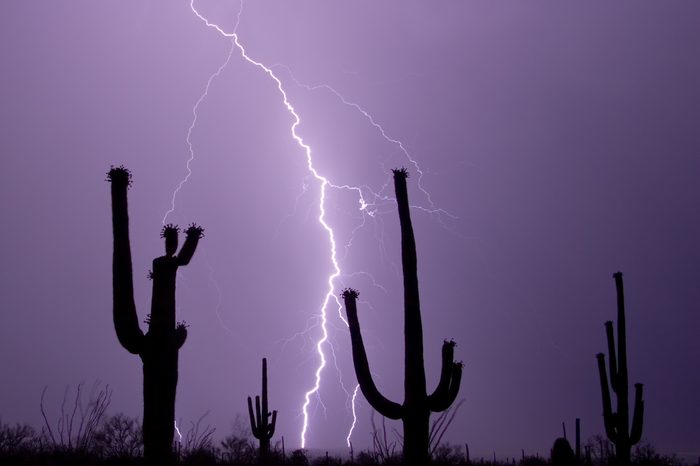
Lightning can strike without rain
The lightning strikes that often cause forest fires occur without the rainstorms you’re used to associating with them. Dry lightning, as it’s called, is most likely to happen in western states in the United States during the late spring and early summer.
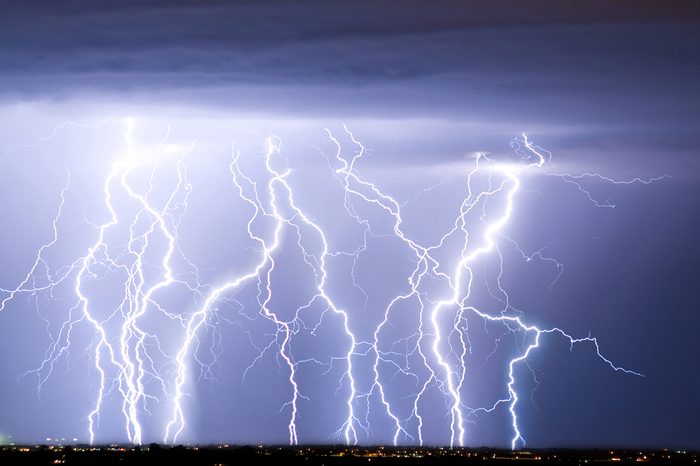
You see ground-up lightning
There are six different types of lightning, but most often, when you see a bolt of lightning it is cloud-to-ground lightning. However, one of the main misconceptions about lightning is that you see it hitting the Earth. In fact, what you see is the complete opposite. The bottom of clouds during a storm have a negative electric charge and the objects on Earth typically have a positive charge. An invisible channel of negative electricity shoots down from the cloud and, like the old saying goes, opposites attract. In one-millionth of a second, a positive channel of positive electricity shoots back up to the sky and produces the visible flash.
Why trust us
At Reader’s Digest, we’re committed to producing high-quality content by writers with expertise and experience in their field in consultation with relevant, qualified experts. We rely on reputable primary sources, including government and professional organizations and academic institutions as well as our writers’ personal experiences where appropriate. We’ve gone the extra step and had Ambrose Martos, a fact-checker with 20-plus years of experience researching for national publications including National Geographic Adventure and Popular Mechanics, verify that all facts, studies and quotes are correct. Read more about our team, our contributors and our editorial policies.
Sources:
- American Physical Society: “This Month in Physics History: November 1777: Discovery of Lichtenberg Figures”
- NBC News: “Here’s what a lightning strike can do to your skin”
- National Weather Service: “How powerful is lightning?”
- The University of Melbourne: “What does lightning actually do to a tree?”
- Science X: “Venezuelan region wins Guinness record for lightning”
- National Park Service: “Fulgerites: The Power of Lightning”
- National Weather Service: “How Dangerous Is Lightning?”
- Cleveland Clinic: “Astraphobia (Fear of Thunder and Lightning)”
- BBC: “Lightning fires threaten planet-cooling forests”
- National Weather Service: “How Hot Is Lightning?”
- NOAA National Severe Storms Laboratory: “Severe Weather 101”




















